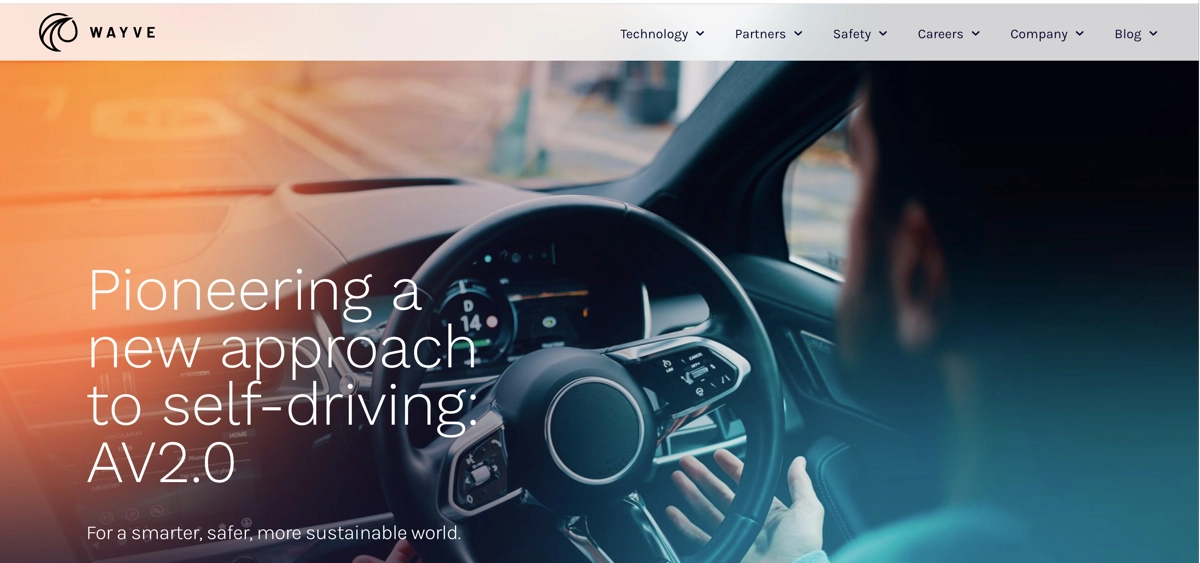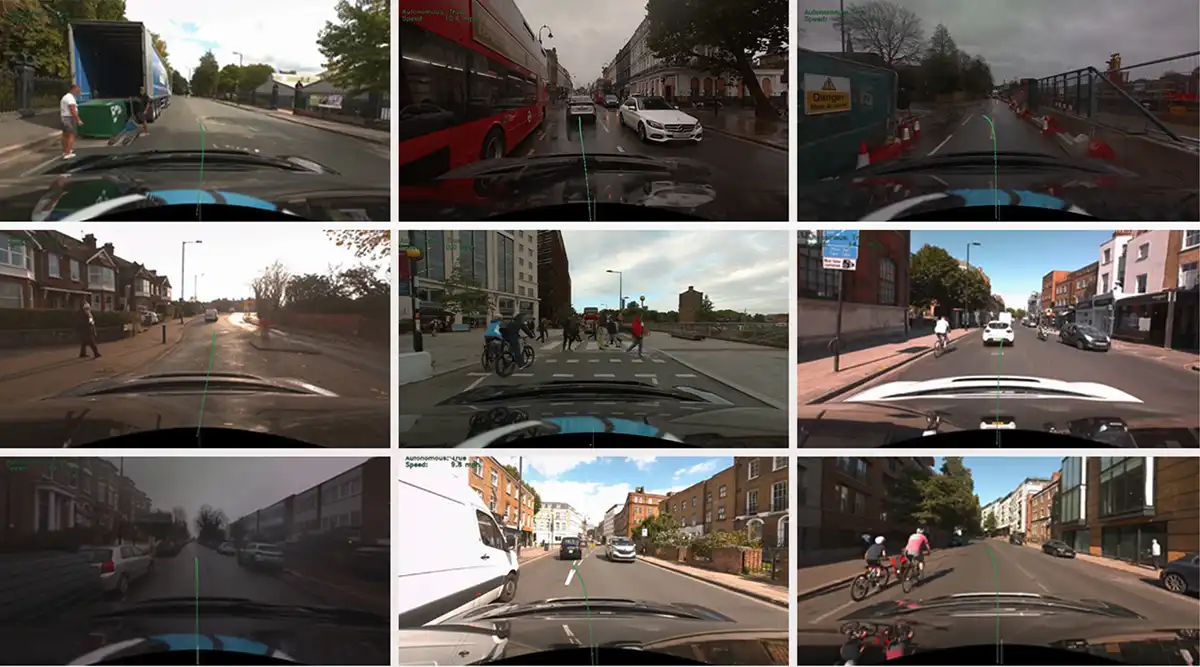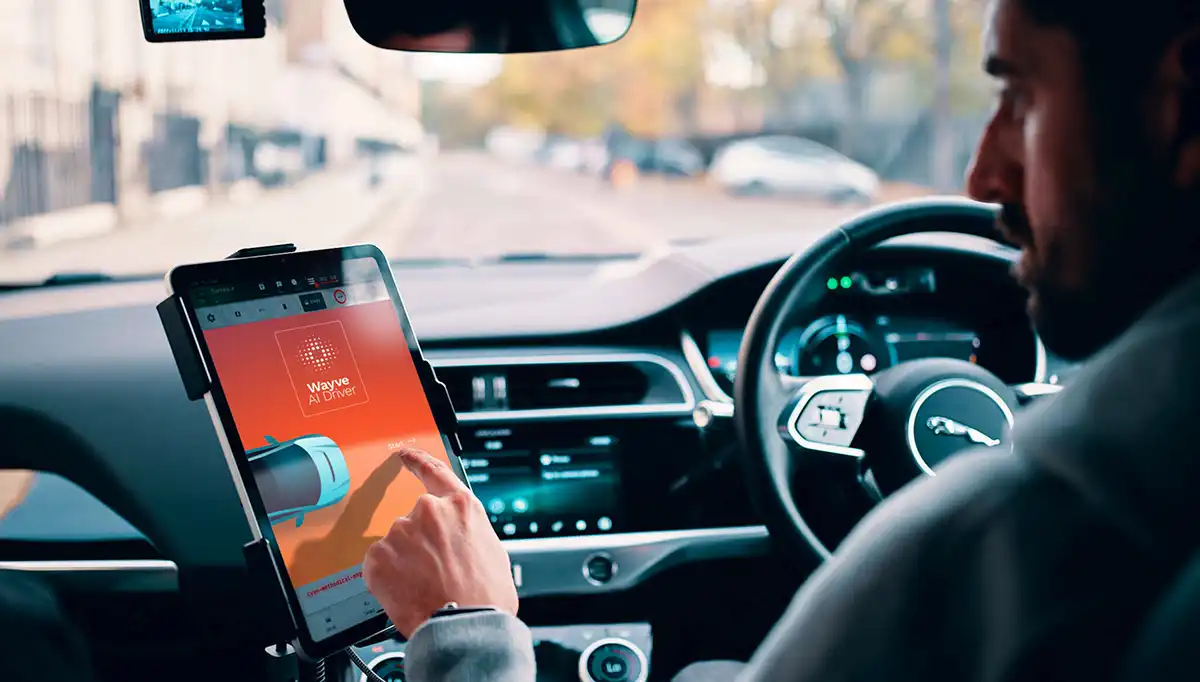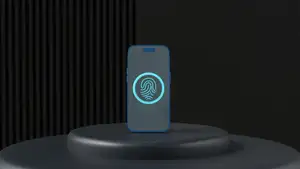
AI-Powered Chatbots Now Being Used to Make Autonomous Vehicles More Intelligent
A car company called Wayve is using advanced AI-powered chatbots to improve the smartness of its driverless vehicles. LLMs (large language models) are being hailed by many as the robotics industry's next big thing. They can make cars and a range of robots easier to control and much quicker to train.
Wayve – a self-driving car startup company- can now question its vehicles as to why it made the decision it did while driving. The car then answers the question. The aim of this innovative new tech is to help train driverless cars to become better using the same technology that powers ChatGPT.
The UK-based driverless vehicle company combined a cutting-edge LLM with its existing self-driving software and devised a hybrid model they decided to name LINGO-1. LINGO-1 synchronizes driving data (the second-by-second action a driverless car makes) and video data with natural language descriptions that capture a car's actions and what it sees.
The company has been responsible for several important technological breakthroughs in recent years. In 2021, Wayve demonstrated what its AI-powered systems had learned driving around England's capital and then used that knowledge to have its driverless cars navigate around four other UK cities. This kind of challenge usually involves a great deal of engineering before it's possible
In 2022, it made another industry first when the same ground-breaking system was used to drive more than one vehicle type. The latest development is its ability to converse with its vehicles. It is able to answer questions relevant to its actions and surroundings. It is being hailed as a major breakthrough in AI safety based on the answers it gave, even though it had never been trained to do that.
The LINGO1- capabilities are truly astounding. Each time it was asked a question, it gave the precise answer it should have given without fail.
By testing the driverless vehicle from the start of its journey right the way through to the end, the company aims to understand better why and how the vehicles using self-driving software make certain decisions. The vast majority of the time, driverless vehicles work in the correct way they should. However, sometimes, they don't drive fine, which becomes a major issue – as two of the industry's leaders, Waymo and Cruise, have already pointed out.

These two pioneering driverless car companies have successfully launched a limited number of robotaxis in several US cities. However, the tech is still far from flawless – driverless cars from both companies have been involved in minor collisions, not RTAs (road traffic accidents), and have ended up causing traffic jam pileups.
It was also reported that two driverless cars from Cruise hindered an ambulance carrying an injured passenger onboard, who sadly passed away in the hospital sometime later. However, Cruise denied the officials' account.
Wayve hopes to be able to uncover potential flaws in the systems much quicker by questioning the driverless cars and getting them to detail why they made the decisions they did before an accident or minor collision occurred, instead of trawling through recorded onboard footage and incident report errors to understand what went wrong.
The fundamental challenge to make driverless cars ultimately secure is the safety aspect. Pioneering tools like LINGO-1 that are constantly evolving will help recognize the weak parts of the system that are ineffective and need improving. The next logical phase at this point is to teach driverless cars to use language.
To teach LINGO-1, Wayve's expert team of driving professionals, several of whom used to be driving instructors, speak out loud while driving the vehicle, the whole time explaining what they were doing and why they were doing it. For example, they explained what noticeable hazards were visible around them, why they increased their speed or reduced their speed, and the reasons for many other important actions.

The company then uses this data to improve the technology, arming it with useful tips about driving just like a human instructor would teach their student with relevant and important information about the best thing to do in certain situations. Explaining to a driverless vehicle instead of just showing it can dramatically speed up the training time.
Google and Abbeel's firm Covariant also use natural language in robotics, meaning Wayve isn't the only company doing so. They utilize the tech to question or instruct industrial or domestic robots. However, Wayne is the first self-driving car company to use this hybrid technology, which is officially known as VLAMs (visual-language-action models).
In human terms, an image is worth a thousand words, but it's the complete opposite when it comes to machine learning. For a computer, images tend to be full of worthless data. According to some researchers in the field, the way LINGO-1 explains its actions is impressive.
However, some have expressed doubt about a model that may decide to construct its own version of events. If the model is able to lie, for example, or not give truly accurate information, it will be extremely difficult to trust. With this in mind, Wayve will continue to perfect its system using the latest technological developments and human input.
Also, Wayve's ground-breaking LINGO-1 has an advantage over other non-hybrid models in that the accompanying video data instructs its answers. In other words, this technology/system makes their system give the most truthful answers possible.
We could very well be on the cusp of another important step in the evolution of robotics, especially if companies like Wayve can continue to perfect the way we interact with robots through language.









